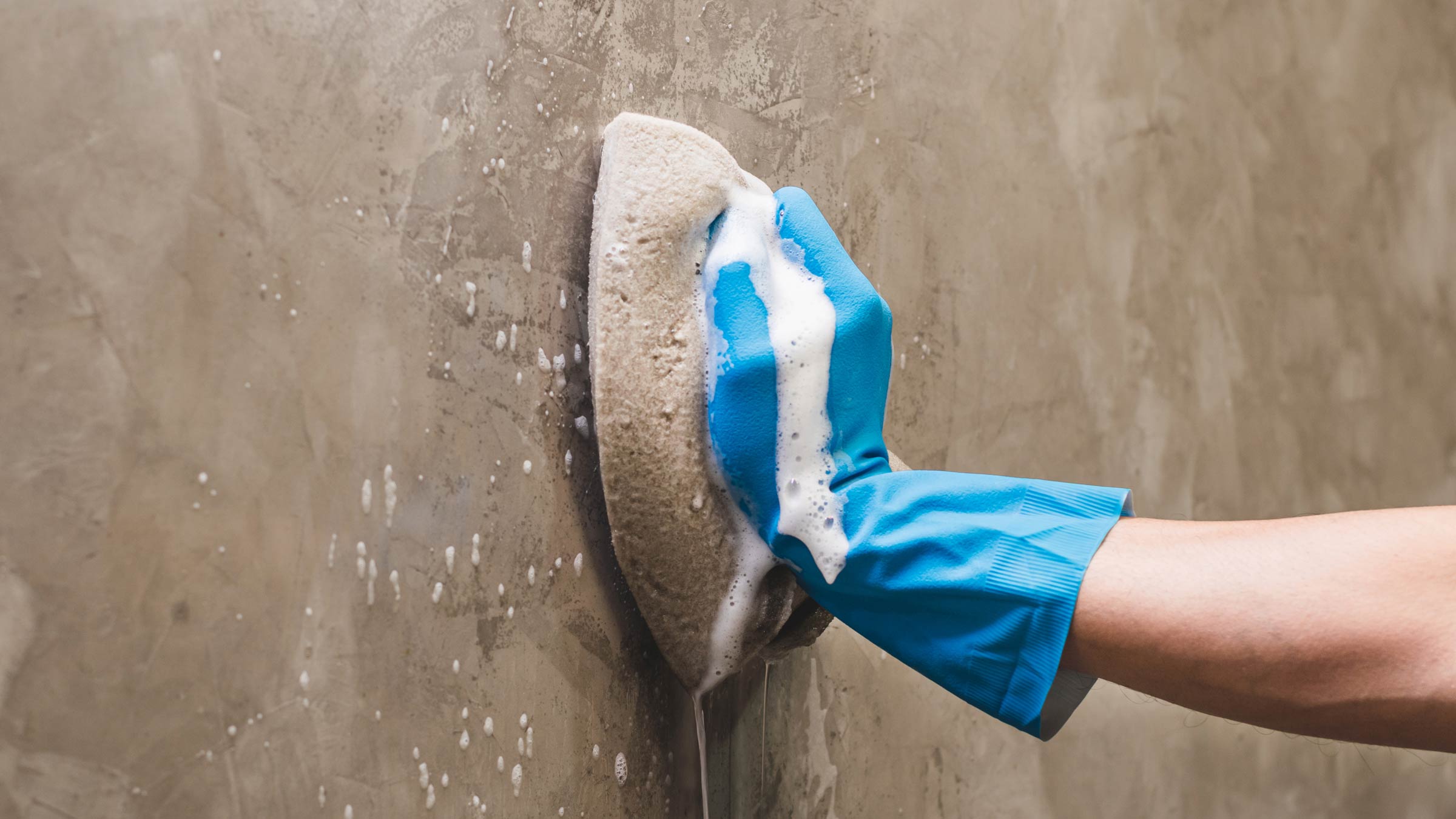
Most likely, mold is growing in your home.
Though mold grows outdoors, it’s easy for mold spores to be brought inside through windows or an air conditioning or heating system. Then any water or dampness inside your house can spur the mold to spread, and you’ve got another home improvement task on your list.
You might smell a musty scent but not know where to look. The basement? The bathroom? Or the crawl space? Those could be good places to start looking for black or grayish spots.
Mold exposure symptoms
That growing fungus could be affecting the air quality in your home. Mold can cause the following symptoms:
- stuffy nose
- sore throat
- watery eyes
- coughing or wheezing
- burning eyes
- skin rash
If you have asthma, COPD or another respiratory disease, or you have a compromised immune system, you’ll want to quickly eliminate the mold. Left untouched, it can continue to spread and make it harder for you to breathe.
How do you tell if mold is making you sick?
It’s hard to know sometimes. There’s no specific test to see if you’ve been exposed to mold. We can test to see if you have an allergy to mold. If you have persistent congestion and coughing in the basement or wherever you’ve seen mold, but get better when you’re out of your home, that may be a sign that mold is to blame.
Should I get my house tested for mold?
I don’t recommend testing your home for mold, because mold is everywhere. You're going to find it, if you test for it. But it's very unlikely to cause clinical symptoms unless there's clear water damage and visible mold.
Can mold exposure cause itchy skin?
Respiratory symptoms like nasal congestion and cough are much more common reactions to being exposed to mold. However, it’s possible to trigger itching in people with underlying conditions such as eczema who are also allergic to mold.
Direct contact with moldy surfaces or environments may irritate the skin. Mold spores are released in the air and are common in the environment; they’re not likely to cause itchy skin.
Does mold cause asthma?
Mold does not directly cause asthma, but it can make it worse. If you have asthma and are sensitized to or allergic to mold, you can experience wheezing and have difficulty breathing because the muscles surrounding their airways contract.
There are also rare conditions in which people with an underlying lung disease, such as asthma, are at higher risk for infection and inflammation in the lungs if they’re exposed to mold.
Can mold grow in your lungs?
Yes, mold can grow in your lungs. You’re at risk if you have cystic fibrosis, asthma or another respiratory illness. For someone without those illnesses, mold won’t likely grow in your lungs. If you get significant and regular exposure to mold, such as a farmer who’s regularly breathing in the air from molding hay, you can develop a persistent cough from the irritation to your lungs.
Will a dehumidifier or air purifier help with mold?
You can slow the spread of mold in your house with a dehumidifier that helps keep an area dry and an air purifier, which can capture mold spores in the air. Wiping down surfaces such as bathroom tile will also help.
The most important step is to stop moisture and leaks to avoid recurrent mold in the environment.
Once mold is present, you have to treat it to get rid of it. If the mold hasn’t extensively spread, you can use household cleaners such as white vinegar or bleach diluted in a lot of water. If you’re allergic or sensitive to mold, it’s best to wear a mask when cleaning.
Seek out the help of a professional if mold covers a large area or if it’s gotten into the drywall, ceilings or floors, because the materials may have to be replaced.
How long does it take for mold to make you sick?
That depends on the person and how much mold they’ve been exposed to. If you’re very sensitive to mold, you may experience congestion and a cough as soon as you’re exposed. Others may not notice if there’s a small amount of mold. As the mold spreads, they may or may not have a reaction.
How do you detox from mold exposure?
Being exposed to mold does not require a detox. All you need to do is remove the mold, then your symptoms will, most likely, go away. If you have underlying health conditions that are affected by mold, it’s important to talk to your doctor. People with mold allergies may want to consider allergy shots to make them less sensitive to mold. And if you have certain lung diseases, you may need medications to treat infections related to mold.
Can I remove mold myself?
You can. If you do, I suggest that you follow the recommendations made by the U.S. Centers for Disease Control and Prevention:
- Use soap or a bleach solution with a maximum of one cup of bleach diluted in one cup of water.
- While you’re cleaning:
- Open windows and doors
- Wear rubber boots, rubber gloves, and goggles
To prevent mold from returning, it’s important to address moisture and leaks in your home.
Preventing mold in your home
There are steps the CDC recommends you take to prevent mold from growing in your home:
- Keep humidity levels in your home as low as you can — no higher than 50% — all day long. An air conditioner or dehumidifier will help you keep the level low.
- Be sure the air in your home flows freely. Use exhaust fans in the kitchen and bathroom that vent to outside your home. Make sure your clothes dryer vents outside your home.
- Fix any leaks in your home's roof, walls or plumbing so that mold doesn’t have moisture to grow.
- Clean up and dry out your home fully and quickly (within 24–48 hours) after a flood.
- Add mold inhibitors to paints before painting. You can buy mold inhibitors at paint and home improvement stores.
- Clean bathrooms with mold-killing products.
- Remove or replace carpets and upholstery that have been soaked and cannot be dried right away. Don't use carpet in places like bathrooms or basements that may have a lot of moisture.
Can you stay in a house with black mold?
Mold has many different colors, but the color doesn’t indicate how dangerous the mold might be. Usually, the mold that people are most concerned about is a black and greenish mold called Stachybotrys chartarum. Though some molds release toxins in the air called “mycotoxins,” there’s no evidence the toxins cause long-term health problems or serious disease.
I don’t consider the health risks from this black mold to be any worse than the risks from any other type of mold. So, it’s not important to figure out the type of mold in your house before eliminating it. Just focus on clearing out any mold and finding ways to prevent it from coming back by addressing water leaks, humidity and flooding.
And if you know you’ve already been exposed to mold, no need to worry that it will lead to major health problems down the road.

Are your allergies getting worse or interrupting your life?
Schedule an appointment with one of our experts here.
Schedule Today




